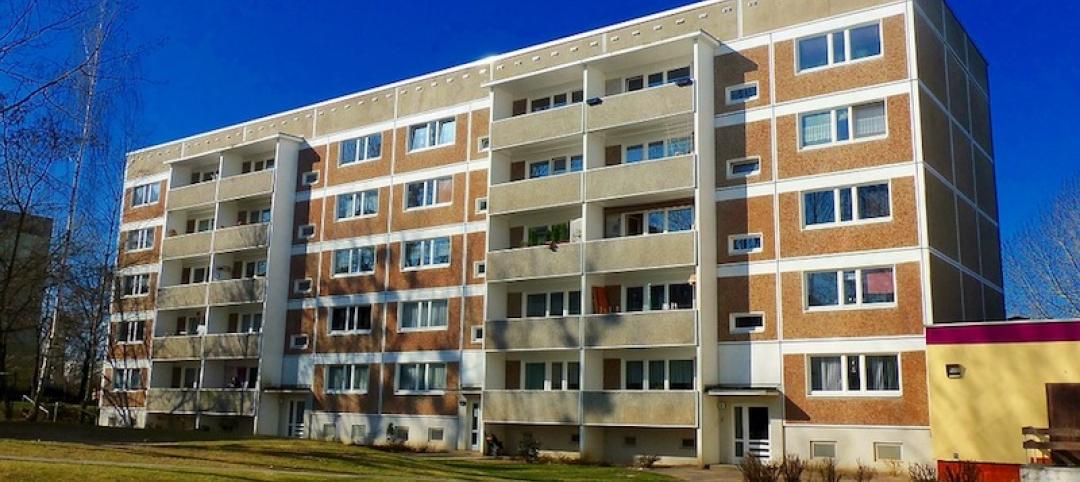A new report and a video presentation support the concept of a steel and timber composite system for mid- and high-rise buildings.
The American Institute of Steel Construction (AISC) and Skidmore, Owings & Merrill LLP (SOM) recently released the report which proposes a system consisting of structural steel columns and beams that support a Cross-Laminated Timber (CLT) floor system, creating a flat soffit condition. AISC and SOM partnered to study the combination of steel and CLT with an eye toward residential construction.
“AISC and SOM’s study successfully shows that the comparative steel-timber composite construction system could also be competitive in the high-rise residential market,” according to a news release. The steel and timber framing system builds on SOM’s Timber Tower Research Project that studied timber-concrete composite construction for a hypothetical high-rise building.
The report, “AISC Steel and Timber Research for High Rise Residential Buildings - Final Report,” and a video presentation by Benton Johnson, PE, SE, LEED Green Associate, senior structural engineer at SOM, titled, “Your Next Project Considering Steel & Timber Research for Residential Buildings,” are available for free at www.aisc.org/timberresearch.
Related Stories
Codes and Standards | Jan 7, 2019
Washington, D.C., to transition to 100% renewable energy by 2032
Includes measures to reduce emissions from buildings and transportation.
Codes and Standards | Jan 4, 2019
Canada’s National Building Code will include climate change obligations
New durability requirements for new buildings in the works.
Codes and Standards | Jan 4, 2019
LEED v4.1 beta registration begins in January
First releases are O+M, BD+C, and ID+C.
Codes and Standards | Jan 3, 2019
U.S. Appeals Court says general contractors can be cited for subcontractor violations
Ruling will prompt review of OSH decision that said GCs cannot be held liable for subs’ violations.
Codes and Standards | Jan 3, 2019
Tall mass timber code changes receive final approval
New provisions to be included in the 2021 International Building Code.
Codes and Standards | Jan 2, 2019
ASHRAE’s Low-Rise Residential Buildings standard update now available
Performance measures are at least 50% more efficient than 2006 IECC.
Codes and Standards | Jan 2, 2019
Study compares labor hours for various low-slope roofing options
Type of roof covering, project parameters, tool management, and crew efficiency all impact profitability.
Codes and Standards | Dec 20, 2018
New York’s ‘Scaffold Law’ under fire for driving up project costs
Lawmakers under pressure to reform law that makes contractors 100% liable for work-site injuries.
Codes and Standards | Dec 19, 2018
Guidance for water utilities on indoor recycled water use released
Provides recommended ranges on 13 different parameters of water quality.
Codes and Standards | Dec 18, 2018
Development in Africa, Asia, and uptake in air conditioning will require more efficient buildings
Dramatic action will be needed for global building sector to cut carbon in line with international agreements.

















